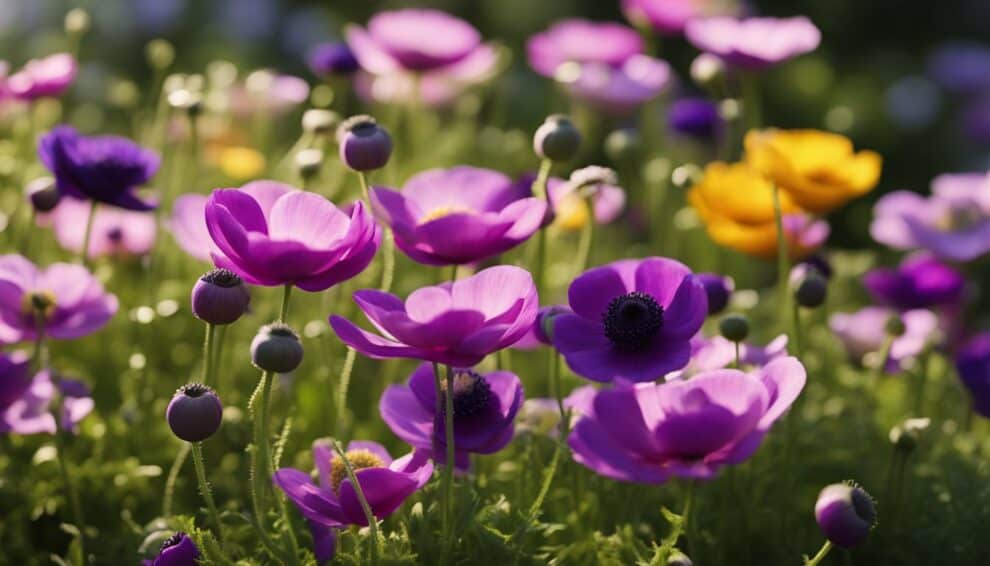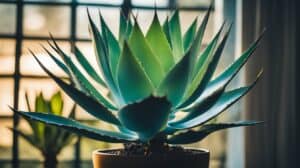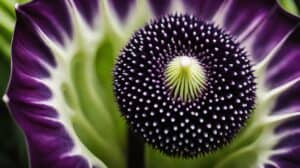Anemone Coronaria is a vibrant and colorful flower that can add a touch of elegance to any garden.
With its delicate petals and striking colors, it is no wonder that this flower is a popular choice for gardeners around the world.
In this article, we will explore the beauty and charm of Anemone Coronaria and provide tips on how to grow and care for these stunning flowers.

The Anemone Coronaria, also known as the Poppy Anemone, is a member of the buttercup family and is native to the Mediterranean region.
These flowers come in a variety of colors, including red, pink, purple, and white, and typically bloom in the spring.
They are a popular choice for gardeners who want to add a pop of color to their garden, and they are often used in flower arrangements and bouquets.
In addition to their beauty, Anemone Coronaria is also easy to grow and care for, making them a great choice for novice gardeners.
Understanding Anemone Coronaria
Botanical Profile
Anemone Coronaria, also known as Poppy Anemone, is a flowering plant that belongs to the Ranunculaceae family.
It is native to the Mediterranean region and is widely cultivated for its showy flowers.
The plant has a tuberous root system and produces upright stems that can grow up to 40 centimeters in height.
The leaves are deeply lobed and have a bright green color.
The flowers of Anemone Coronaria are large and showy, with a diameter of up to 8 centimeters.
They have a distinctive cup-like shape and come in a range of colors, including red, pink, purple, blue, and white.
The flowers bloom in spring and early summer and are popular with gardeners for their vibrant colors and long-lasting blooms.
Varieties and Colors
Anemone Coronaria is available in a range of varieties and colors, making it a versatile choice for any garden. Some of the popular varieties include:
- The De Caen Group: This variety has large, double flowers in shades of pink, purple, red, and blue.
- The St. Brigid Group: This variety has large, semi-double flowers in a range of colors, including white, pink, red, and blue.
- The Hollandia Group: This variety has large, single flowers in bright red.
Anemone Coronaria is also available in bi-color and multi-color varieties, adding to the plant’s visual appeal.
Some of the popular bi-color varieties include the Blue Poppy Anemone and the White and Red Poppy Anemone.
Overall, Anemone Coronaria is a colorful and easy-to-grow plant that can add a touch of elegance to any garden.
With its vibrant colors and long-lasting blooms, it is a popular choice for both novice and experienced gardeners alike.
Cultivation Tips

Planting Guidelines
Anemone Coronaria is a beautiful and easy-to-grow flowering plant that can add a splash of color to any garden.
When planting Anemone Coronaria, it is important to choose a location that receives full sunlight or partial shade.
The best time to plant them is in the fall or early spring when the soil is moist and cool.
To plant Anemone Coronaria, dig a hole that is twice the size of the bulb. Place the bulb in the hole with the pointed end facing up.
Cover the bulb with soil and water it well. Space the bulbs about 4-6 inches apart to allow for proper growth.
Soil and Fertilization
Anemone Coronaria prefers well-draining soil that is rich in organic matter.
Before planting, it is recommended to amend the soil with compost or well-rotted manure. This will help to improve the soil’s fertility and drainage.
To ensure healthy growth, it is important to fertilize Anemone Coronaria regularly.
Use a balanced fertilizer that is high in phosphorus, which promotes flower production. Apply the fertilizer in the spring and again in the fall.
Watering and Sunlight Needs
Anemone Coronaria requires regular watering to thrive. Water the plant deeply once a week, or more often in hot, dry weather.
Be careful not to overwater, as this can lead to root rot.
In terms of sunlight, Anemone Coronaria prefers full sunlight or partial shade.
If the plant is grown in full sunlight, it may require more frequent watering. If grown in partial shade, the plant may require less water.
By following these simple cultivation tips, you can enjoy the beauty of Anemone Coronaria in your garden for years to come.
Designing Your Garden with Anemone Coronaria

Anemone Coronaria is a beautiful and colorful flower that can add a touch of elegance to any garden.
Here are some tips for designing your garden with Anemone Coronaria.
Color Combinations
Anemone Coronaria comes in a variety of colors, including red, pink, blue, and white.
When designing your garden, consider using a combination of these colors to create a visually stunning display.
For example, you could plant a row of red Anemone Coronaria next to a row of pink ones to create a gradient effect.
Companion Plants
Anemone Coronaria looks great when planted alongside other flowers and plants. Some great companion plants for Anemone Coronaria include:
- Tulips: Tulips and Anemone Coronaria have similar blooming times and look great together.
- Daffodils: Daffodils and Anemone Coronaria also have similar blooming times and complement each other well.
- Hyacinths: Hyacinths come in a variety of colors and look great when planted with Anemone Coronaria.
When designing your garden, consider using these companion plants to create a cohesive and visually appealing display.
Overall, designing your garden with Anemone Coronaria is a great way to add a touch of color and elegance to your outdoor space.
With a little bit of planning and creativity, you can create a stunning display that will impress your neighbors and guests.
Frequently Asked Questions

What are the ideal growing conditions for Anemone coronaria?
Anemone coronaria thrives in well-draining soil with a pH range of 6.0 to 7.5. They prefer full sun to partial shade and require moderate watering.
It is best to plant them in the fall or early spring, and they grow well in USDA hardiness zones 7 to 10.
How can I extend the vase life of Anemone coronaria cut flowers?
To extend the vase life of Anemone coronaria cut flowers, it is recommended to cut the stems at a 45-degree angle and place them in cool water immediately after cutting.
Change the water every two days and trim the stems every time you change the water.
What are the different color varieties of Anemone coronaria?
Anemone coronaria comes in a wide range of colors, including red, pink, purple, blue, and white.
Some varieties have a single row of petals, while others have multiple rows of petals.
How do I properly water Anemone coronaria in my garden?
Anemone coronaria requires moderate watering. It is important to water them deeply once a week, rather than shallowly more often.
Overwatering can lead to root rot, so it is important to ensure that the soil is well-draining.
Can Anemone coronaria thrive in colder climates?
Anemone coronaria is a warm-weather plant and does not tolerate frost.
However, it can be grown in colder climates if planted in a protected area or in a greenhouse.
What is the symbolic meaning behind Anemone coronaria flowers?
Anemone coronaria is often associated with love and affection.
In ancient Greek mythology, the goddess Aphrodite is said to have turned a mortal woman into an anemone flower to protect her from harm.
The flower is also a symbol of anticipation and excitement for the future.














